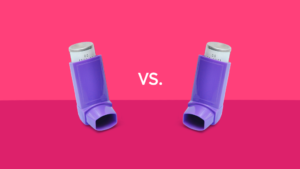The Surprising Complications of Uncontrolled Diabetes: What You Need to Know
HOME | DIABETES EDUCATION |UNCONTROLLED DIABETES: CAUSES, SYMPTOMS AND TREATMENT
Diabetes is a chronic condition characterized by high blood sugar levels that occurs when the body cannot produce enough insulin or use insulin effectively.
In people with uncontrolled diabetes, blood sugar levels remain persistently elevated despite treatment efforts.
This is dangerous because high blood glucose causes damage to blood vessels and nerves that leads to serious complications over time if left uncontrolled.
Recognizing the signs of uncontrolled diabetes and taking steps to improve blood glucose levels is critical for preventing long-term issues.
This article discusses the causes, symptoms, complications, and treatment strategies for uncontrolled diabetes.
Key Takeaways: Uncontrolled Type 2 Diabetes
- Uncontrolled diabetes means blood glucose levels remain persistently elevated despite treatment efforts. An HbA1c over 7% generally indicates uncontrolled diabetes.
- High blood glucose causes damage to blood vessels and nerves throughout the body. This damage leads to various complications if diabetes is uncontrolled long-term.
- Pay attention to symptoms like frequent urination/thirst, blurred vision, infections, tingling, fatigue as these can indicate uncontrolled diabetes.
- Consistently working toward treatment targets, even if imperfect, helps prevent irreversible complications like kidney failure, blindness, and amputation.
- Strategies that can improve the blood glucose levels in uncontrolled diabetes include medication adjustment, glucose monitoring, dietary changes, activity, mental health support, and help from specialists.
- Some people are able to reverse uncontrolled type 2 diabetes to the point of no longer needing medication through significant weight loss, bariatric surgery, or very low-calorie diets under medical supervision.
- Lifestyle changes to prevent complications include managing weight, increasing activity, eating whole foods, restricting carbs/alcohol, quitting smoking, and managing stress. Seeing providers for recommended testing is also key.
What is Uncontrolled Diabetes?
Diabetes is a chronic condition characterized by high blood sugar levels. This occurs when the body cannot produce enough insulin or cannot utilize insulin effectively. Insulin is a hormone produced by the pancreas that allows cells to absorb glucose from the bloodstream and use it for energy.
In people with uncontrolled diabetes, blood sugar levels remain consistently elevated. This is dangerous because persistently high blood glucose causes damage to nerves, blood vessels, and organs over time. Uncontrolled diabetes greatly increases the risk of developing serious complications.
There are a few different types of diabetes:
- Type 1 diabetes – The body’s immune system attacks and destroys insulin-producing cells in the pancreas. People with type 1 diabetes do not produce any insulin and require insulin injections to survive. This type usually develops in childhood or young adulthood but can occur later in life.
- Type 2 diabetes – The body does not produce enough insulin or cannot properly utilize insulin. This is the most common type, generally occurring in adulthood, and accounts for 90-95% of diabetes cases.
- Gestational diabetes – A temporary form of diabetes that can develop during pregnancy. Hormone changes during pregnancy can disrupt insulin regulation.
Uncontrolled diabetes refers to persistently high blood sugar levels regardless of type. A person’s diabetes is considered uncontrolled if their HbA1c level remains above the target range over time. HbA1c provides an estimate of average blood glucose over the past 2-3 months.
In general, target HbA1c levels for people with diabetes are:
- Less than 7% for most non-pregnant adults
- Less than 6.5% for certain high-risk groups like those with cardiovascular disease
- Less than 6% for many pregnant women
An HbA1c over 7% indicates uncontrolled diabetes for most people. Consistently high glucose levels above these targets raise the risk of diabetes complications.
Based on the conducted studies prevalence of uncontrolled diabetes mellitus (UDM) is ranged from 38.9 to 76.9% among patients with type 2 diabetes [9,10,11]. Some factors such as older age, male gender, smoking, longer disease duration, hypertension, illiteracy, being employed, and obesity are associated with UNM [9].
https://link.springer.com/article/10.1007/s40200-023-01201-9#:
What Causes Uncontrolled Diabetes?
There are several potential reasons why someone may have uncontrolled diabetes despite having a diagnosis and treatment plan:
- Inadequate medication regimen – The dosage or type of medication may need adjustment by a healthcare provider.
- Non-adherence – The person may struggle to follow prescription instructions, take medication consistently, or make recommended lifestyle modifications.
- Undiagnosed diabetes – Many people have type 2 diabetes but are unaware due to lack of symptoms. By the time they are diagnosed, they often have very high blood glucose.
- Inadequate glucose monitoring – Regular self-monitoring of blood glucose provides important feedback for treatment adjustments. Infrequent testing can miss highs.
- Difficulty affording treatment – Some people struggle to afford medications, test strips, doctor visits, and supplies needed to properly manage diabetes.
- Other medical conditions – Certain illnesses, infections, and medications can sometimes worsen blood glucose control.
- Eating disorders – Disordered eating behaviors or distorted body image can interfere with proper diabetes care.
- Pregnancy – Hormone changes make blood glucose regulation more difficult. Gestational diabetes also requires special management.
While diabetes treatment has improved tremendously, maintaining ideal blood glucose control still proves challenging for many people. Working closely with a healthcare team can help identify and address barriers to control.
Signs and Symptoms of Uncontrolled Diabetes
Uncontrolled diabetes can cause an array of symptoms. Recognizing signs is important because early intervention helps prevent long-term complications. Symptoms primarily occur due to elevated blood glucose or inadequate glucose delivery to tissues.
Common symptoms of hyperglycemia:
- Frequent urination and thirst
- Increased hunger
- Fatigue
- Blurred vision
- Slow healing cuts/bruises
- Tingling or numbness in hands/feet
- Recurrent infections
Signs of inadequate glucose delivery:
- Weight loss despite increased appetite
- Nausea, vomiting, abdominal pain
- Weakness, dizziness
- Confusion
Other possible symptoms:
- Fruity, sweet, or wine-like breath odor
- Dry mouth and skin
- Itchy skin, yeast infections
- Headaches
Symptoms may develop slowly over time or come on more suddenly if blood glucose spikes acutely. The same person can experience different symptoms day-to-day. Paying attention to how you feel and tracking/treating symptoms can help prevent emergencies.
Complications of Uncontrolled Diabetes
Allowing diabetes to remain uncontrolled for too long has many risks. High blood sugar causes damage to blood vessels and nerves that can lead to severe, irreversible complications over time. Consistently working toward treatment targets helps prevent issues.
Some potential complications of uncontrolled diabetes:
Cardiovascular disease – Higher risk of heart attack, stroke, and poor circulation due to atherosclerosis. Nerve damage also increases risk of abnormal heart rhythms.
Kidney disease (nephropathy) – Vessel/nerve damage in kidneys causes inability to properly filter blood and waste. Can progress to kidney failure requiring dialysis.
Eye disease (retinopathy) – Blood vessel damage in eyes leading to impaired vision, spots/floaters, blindness. Diabetes is the #1 cause of blindness in adults.
Nerve damage (neuropathy) – Damage to nerves causes pain, numbness, weakness which often starts in feet but can spread. Can impair digestion, sexual function.
Skin conditions – Bacterial/fungal infections, slower healing, diabetic dermopathy (discoloration and spots due to vessel damage under skin).
Foot damage – Poor circulation and loss of sensation increases risk of ulcers, deformities, infections which may require amputation.
Hearing impairment – Vessel/nerve damage can cause hearing loss. People with diabetes twice as likely to have hearing loss vs non-diabetics.
Dementia risk – Uncontrolled diabetes associated with higher rate of cognitive decline, vascular dementia. Exact link not fully understood.
Mental health effects – Depression, anxiety, disordered eating more common. Stress of disease management also takes emotional toll.
Early screening and optimal management of diabetes are crucial for preventing complications that can greatly reduce quality of life.
Long-Term Effects of Uncontrolled Diabetes
Over many years, the strain of chronically high blood glucose causes cumulative damage that leads to end-organ failure. For example, uncontrolled diabetes often eventually results in:
- Kidney failure – Requirement of lifelong dialysis or kidney transplant
- Blindness – Severely impaired vision or complete vision loss
- Lower limb amputation – Dangerous foot infections and poor circulation necessitates removal of toe, foot or leg
- Heart failure – Weakened heart muscle reduces ability to pump blood properly
- Nerve pain – Severe constant neuropathic pain which impairs mobility and sleep
- Erectile dysfunction – Inability to achieve/maintain erection due to pelvic nerve damage in men
- Stroke – Vessel damage in brain results in oxygen deprivation causing brain tissue death
- Need for assisted living – Complications make self-care very difficult resulting in loss of independence
The development of any one of these long-term effects can be devastating. While some damage may already be present by the time of diagnosis, instituting proper diabetes treatment can help prevent further cumulative effects that drastically reduce quality and length of life.
6 Ways to Get Uncontrolled Diabetes Under Control
If your current treatment regime does not keep your blood glucose in check, do not lose hope. Several strategies can help get uncontrolled diabetes under better control.
1. See your healthcare provider – Schedule an appointment to discuss adjusting your medications and treatment plan. Do not try to adjust insulin or other meds on your own.
2. Check blood glucose regularly – Test blood sugar upon waking, before meals, 2 hours after meals, and at bedtime. Look for patterns and discuss results with your provider.
3. Keep a food diary – Record everything you eat and drink along with portions and timing. Review with your healthcare team to identify dietary changes needed.
4. Get regular exercise – Aim for at least 30 minutes per day of activity (walking, swimming etc) to help lower blood glucose.
5. Manage stress – Mental health affects diabetes management. Try meditation, counseling, support groups. Notify your provider regarding depression, anxiety.
6. Seek help from specialists – Endocrinologists, diabetes educators, nutritionists, and mental health professionals can provide specialized support.
Achieving ideal control requires diligence and a multi-faceted treatment approach. But sticking with it helps avoid the devastating long-term complications of uncontrolled diabetes.
Can Uncontrolled Diabetes Be Reversed?
For many years, diabetes was viewed as a progressive disease that worsens over time. We now know that in some cases, certain interventions can put type 2 diabetes into remission and essentially reverse the disease.
Weight loss – Losing a significant amount of weight (at least 10% of body weight) through diet, exercise, and/or bariatric surgery allows some people to reach and maintain normal blood glucose levels without medication.
Bariatric surgery – Procedures like gastric bypass and sleeve gastrectomy that reduce stomach size/function show high rates of diabetes reversal by facilitating weight loss.
Very low-calorie diets – Consuming only 500-800 calories per day for several months under medical supervision can temporarily reverse diabetes.
Medication – Some newer diabetes drugs have shown promise in restoring pancreatic insulin production. However, effects may not be permanent once medication is stopped.
Reversal does not mean diabetes is “cured” – lifestyle changes must continue in order to maintain remission. And for many, remission may not be possible. But evidence shows diabetes can be reversed in some motivated individuals willing to make major lifestyle changes. This provides hope for turning back the clock on diabetes progression.
Warning Signs of Pending Diabetic Emergency
In people with uncontrolled diabetes, dangerously high or low blood glucose can quickly develop into an emergency requiring urgent treatment. Recognizing the early signs allows quick action that prevents severe consequences.
Hyperglycemia (high blood glucose)
- Increased thirst and urination
- Nausea, abdominal pain
- Shortness of breath
- Fruity breath odor
- Confusion
If hyperglycemia continues unchecked, it can lead to a rare condition called hyperosmolar hyperglycemic state (HHS) marked by:
- Blood glucose >600 mg/dL
- Severe dehydration and confusion
- Fever, rapid heart rate, and hypertension
- Potential progression to seizures or coma
Hypoglycemia (low blood glucose)
- Shakiness, anxiety, irritability
- Sweating, chills, paleness
- Hunger, nausea
- Dizziness, weakness
- Blurry vision
- Fatigue
If hypoglycemia continues dropping, it causes loss of consciousness which can quickly become life-threatening.
Rapidly recognizing and treating hyper- and hypoglycemia prevents progression to an emergency. Knowing symptoms and monitoring blood glucose closely is key for those with uncontrolled diabetes.
How to Prevent Diabetes Complications
Despite best efforts, some people struggle to reach ideal blood glucose targets. However, even modest improvements translate into reduced risk of complications. Consistency is key.
Lifestyle strategies to prevent complications:
- Maintain a healthy weight
- Choose whole, minimally processed foods
- Restrict carbohydrates to control blood sugar spikes
- Participate in regular aerobic and resistance exercise
- Limit or avoid alcohol consumption
- Stop smoking and tobacco use
- Develop effective stress management techniques
- Get adequate sleep (aim for 7-8 hours per night)
Clinical care recommendations:
- Attend regular primary care and endocrinology appointments
- Check blood glucose levels consistently
- Get dilated eye exams, kidney function tests, EKG, and foot exams per provider advice
- Take all medications and insulin as prescribed
- Seek immediate help if experiencing signs of hyper/hypoglycemia
- Get annual flu shot and stay up-to-date on immunizations
- Treat even mild infections seriously and right away
Preventing diabetes complications requires diligence and patience. But consistently following recommended care allows you to live your best life in spite of diabetes.
Conclusion
Uncontrolled diabetes greatly raises the risk of developing debilitating and life-threatening complications over time. However, being aware of the signs and taking proactive steps can help prevent progression and reduce risks. Know your symptoms, check your blood glucose regularly, take medications consistently, see specialists as needed, and make lifestyle changes. Diabetes management is demanding, but small improvements make a big difference. Work closely with your healthcare team and don’t lose hope – even poorly controlled diabetes can often be improved to avoid complications.
Frequently Asked Questions
What are the signs my diabetes is uncontrolled?
Frequent symptoms like increased thirst, frequent urination, blurred vision, slow healing cuts, and tingling in hands/feet can indicate uncontrolled diabetes. Check blood glucose regularly and aim to keep levels in target range advised by your doctor.
Does uncontrolled diabetes go away?
Uncontrolled diabetes will not go away on its own without treatment adjustments. Work closely with your healthcare provider to modify medications and lifestyle until blood glucose is controlled. Some people are able to reverse type 2 diabetes with major weight loss.
Can you reverse the effects of uncontrolled diabetes?
Many effects of uncontrolled diabetes cannot be reversed once complications develop, like vision loss or needing dialysis. However, controlling blood glucose levels can prevent your diabetes from worsening further. Lowering glucose can reduce risk of developing additional complications.
How long can you live with uncontrolled diabetes?
It is difficult to predict life expectancy with uncontrolled diabetes given it depends on individual factors and development of complications. However, research shows that keeping HbA1c under 6-7% helps people with diabetes live a normal lifespan. So uncontrolled diabetes often reduces life expectancy.
How can I stabilize my uncontrolled diabetes?
You and your healthcare provider can work to stabilize uncontrolled diabetes by adjusting medications, checking glucose frequently, changing your diet, getting regular exercise, managing stress, and seeing diabetes specialists like endocrinologists, diabetes educators, and nutritionists. Consistency is key.



